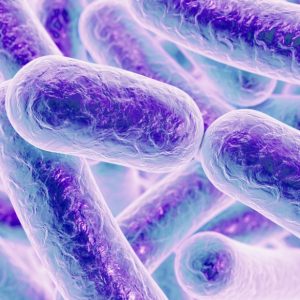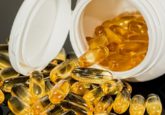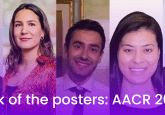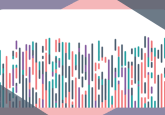Probiotics: filling the gap between sports and science

Jonathan Scheiman discusses the booming field of microbiome studies, the bacteria that can affect athletic performance and bridging the gap between the science and sports communities.10920
Please can you tell us a little bit about yourself, your scientific background and what you do now?
I received my PhD in biomedical science from the NYU School of Medicine Sackler Institute of Graduate Biomedical Sciences (NY, USA), focusing on molecular oncology and immunology. After getting my PhD, I wanted to try something different in genomics and synthetic biology.
So, I did my postdoc at the Harvard Medical School (MA, USA) in George Church’s lab. There we developed tools to read and write genetic information, so I did a lot of work on different genomics technologies and sequencing modalities. I also did genetic engineering work on CRISPR/Cas9.
That’s also where I started doing work on athlete microbiomes. I was a former athlete; I played basketball at St John’s University (NY, USA). I originally wanted to play in the NBA but I didn’t make it. My back-up was getting a PhD, so now I’m really passionate about bridging the science and athletic communities.
For the past 3 years, that’s where we’ve been doing a lot of work. From within George’s lab, we recruited athletes, sequenced their microbiomes, compared them to non-athletes and saw differences in microbial composition in athletes by sport. We also tracked athletes to see how their microbiome changes between performance and recovery phases.
I then finished my post-doc a few months ago, and we’ve now spun out Fitbiomics as a result of the work we’ve done. We’re now looking to continue to develop and commercialize some of the discoveries we made.
10919
Please can you provide us with an overview of what your research involved?
I come from a biomedical background and there’s a lot of interest in the biomedical community to understand disease physiology and phenotypes; what is not working and how we can correct it to promote health. But, we’re interested from a different perspective.
What if we look at the most fit and healthy people in the world? What is unique or enriched to them that can promote optimal performance and recovery? Can we identify that and then extract that information to help others? In essence, we’re using NGS to understand what makes lead athletes unique and perform at an optimum level.
Then, we can extract that information to help them, as well as others. In particular, we’re focused on sequencing the microbiome of lead athletes to identify and isolate novel probiotics that we can then purify, look to functionally validate and then ultimately commercialize as novel ingredients for performance recovery as well as general health, wellness and fitness.
We’re interested in applications for energy metabolism, protein metabolism and gut–brain access, as well as immunology, and they might pertain to endurance, strength, mental toughness and recovery.
Which techniques did you utilize and how were they useful to you?
A lot of what we do utilizes NGS and metagenomics; using that as a discovery tool to identify novel probiotics as well as metabolic pathways that are rich in the gut microbiome of athletes, ultimately to identify probiotic candidates. We collect biological samples from athletes. From there, we can extract genetic information, prepare NGS libraries and get that information decoded.
We then use bioinformatics techniques to determine what organisms these genetic sequences are derived from. We get a snapshot of the microbial composition in an athlete’s gut, we see how it changes over time and we can compare that information from non-athletes to other athletes. We can get a sense of what’s enriched by athletes or what’s unique by sport.
A lot of it is sequencing-and bioinformatics analysis-based. Once we have that information, we can go back to the samples, we can then culture them in the lab under anaerobic conditions using different microbiology techniques to purify and isolate different bacterial colonies of interest. We can take those colonies, grow them and do all sorts of functional studies, both in vitro as well as in vivo.
We can also incorporate metabolomics and mass spectrometry. We can see what these bugs are producing or introduce them into mice to do in vivo studies to see how they affect performance and recovery.
What would you say are the key implications for the everyday person?
We know that the microbiome influences our health, our functionality and our development. For instance, we sequenced runners before and after they competed in a marathon and from that analysis, we discovered bacteria that increase in abundance after the race. Their natural function is to break down any lactic acid, which is cool because that’s a metabolite associated with fatigue that elevates in the blood after strenuous exercise.
A potential application could be this: we could purify these bacteria, grow them and then give them to athletes before they compete to promote endurance, prevent fatigue or promote recovery. We’ve validated their functionality in vitro and in vivo. We’ve seen that they don’t only eat lactic acid, they convert it into anti-inflammatory short chain fatty acids; we’ve seen some interesting initial results in animals as well.
We can envision these sorts of applications not only for elite athletes, but also for people that are interested in probiotics, that want to be fitter, that want to be healthier. It doesn’t just have to be for lactic acid depletion, it could be for anything from protein metabolism to amino acid absorption, breaking down carbohydrates, interacting with our immune system to reduce inflammation. These things might be able to promote health and we’re just looking to identify novel probiotic candidates from extremely fit individuals.
What was the process of turning these scientific results into a business idea?
I did my post-doc in George’s lab as part of the Wyss Institute for Biologically Inspired Engineering (MA, USA) and as a scientist, my mission is to translate science into real-world applications. Most scientists want to do that, we don’t want to only have theories. We want to be able to help people and for me, that was always part of the goal. How can we take what we’re doing in the lab and bring it out into the real world and create technology and products that can help people, and to promote health, technology and science education?
Probiotics is a 60 billion dollar industry. 90% of it consists of two types of bacteria; lactobacillus and bifidobacterium. There are trillions of bugs in and around our body that greatly influence our health and development that are waiting to be discovered to disrupt this industry and I think that’s what science should be doing; it should positively disrupt different industries and improve upon them.
Look at sports nutrition – it’s a 100 billion dollar industry. It could use a great deal of science innovation and fusion. Less than 1% of that industry exists as probiotics so I think the notion of what we’re trying to do – isolate and identify probiotics for athletes as sports nutrition – doesn’t exist yet. The notion of bridging these two communities together, helping people and disrupting the status quo is very exciting.
What does the future hold for you and Fitbiomics, and what do you think the future holds for the microbiome research community in general?
The microbiome field is accelerating quickly, which is exciting. Every day there’s a new high impact publication describing how our microbiome affects different aspects of our health or physiology. In general, the field has initially been a lot of correlation studies; this composition or these bugs are related to this phenotype.
We’re now moving towards more causal studies. We’re seeing how different organisms or communities of organisms can correct, or in cases of a disease promote, certain types of physiology and certainly, that has a lot of applications for microbial therapeutics or health interventions.
Right now, there’s a couple of dozen microbiome companies and start-ups that are all geared towards treating things that range from infections to IBD to obesity to diabetes, even skin conditions. That technology will only progress and mature.
It’s exciting for applications beyond therapeutics too. If you look at the obesity and diabetes epidemics in the USA, can we identify probiotics that might be able to mitigate those problems? It’s also moving beyond just what bacteria are present by looking at metagenomics, metatrancriptomics and metabolomics. Are there applications for personalized nutrition? Can we sequence your microbiome and correlate that with different biomarkers and tell you how you should eat to maintain a healthy lifestyle and maybe even how you should train?
For Fitbiomics, we’re really excited to be out in the real world. I left Harvard 2 months ago and we’re excited to translate some of our discoveries into real-world applications and products. We’re excited to work with elite athletes at the professional, Olympic and national level, do more sequencing and make more discoveries.
We want to return their information back to them, adding how it may be relevant for them but also ultimately translate this data so we can develop novel probiotics that could be disruptive in the nutrition and health industries. Our goal is that we want to empower athletes at all levels – not just the elites. We’re excited to bring this technology to the masses and use sports as a medium to promote the technology, to promote novel probiotics and promote health and fitness.
Do you have anything else to add?
I’ll just emphasize that we’re really excited to bridge the scientific and sports communities in ways that are functional, profitable and ultimately educational. We have a really exciting opportunity to be disruptive, not only in the industry but in our ability to popularize the technology and science; using sports as a medium to inspire the next generation of scientists.
I was a former athlete and I didn’t make it so I became a scientist. I think there are a lot of opportunities out there for other people to become scientists as well.
Finally, when I left New York to start my post doc in Harvard, I took a sheet of BioTechniques protocol with me. Now, I’m back in New York again, I’m pretty sure I still have that sheet of BioTechniques protocol and I’ve now had the opportunity to interview with you, so I feel like I’ve come full circle.




